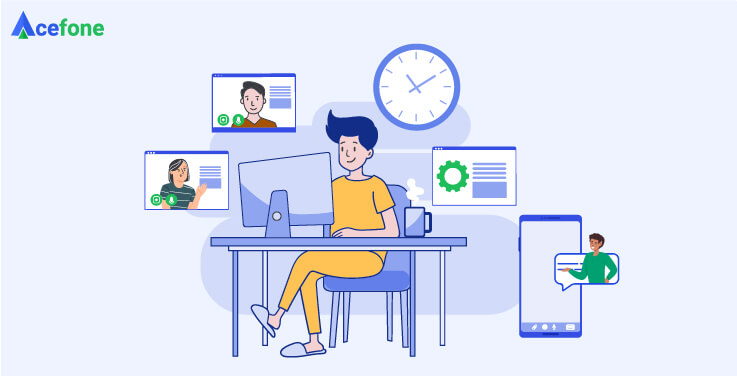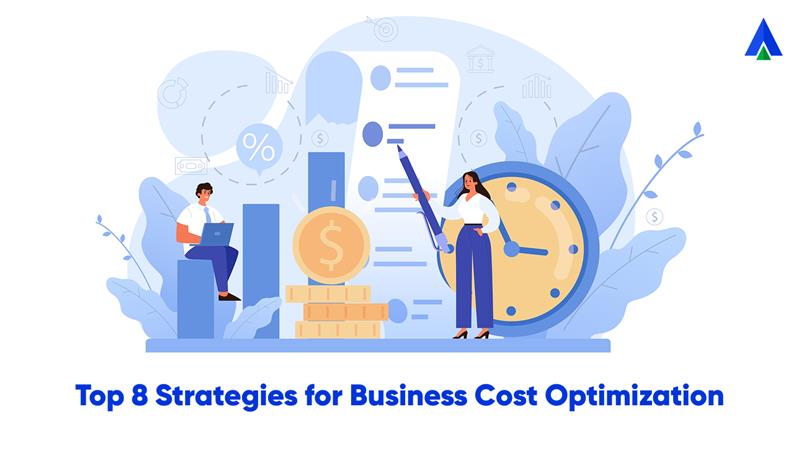Modern-day customers are an impatient lot.
They expect instant gratification and if your agents aren’t available when they call, you can expect your customers to forget your brand regardless of the quality of your products and services. Keeping them on hold or making them wait until you find an effective resolution is even worse.
According to Microsoft, 58% of Americans switch companies only because of poor customer service. Being available for your customers makes all the difference.
You can well imagine the importance of being on your toes if you want to retain them for the long haul.
When it comes to assessing the quality of customer service and support, Average Handle Time is a crucial metric—tricky to understand and measure—important enough to not overlook.
So, it makes sense to learn all about AHT and the role it plays for call center solutions. Let us understand it in detail.
Average Handle Time
Average Handle Time (AHT) is a call center metric used for measuring the average time spent by your agents on resolving caller requests or issues. The time begins when the customer initiates a call and ends after the agent completes all the call tasks and is ready to take the next call.
The on-hold or in-queue time for the customer is also included. The metric helps you improve customer satisfaction and track the support team’s productivity.
It is vital to maintain an optimal AHT. If it runs too high, you have a serious problem with the productivity of the support team. Conversely, a low average handle time may also not be favourable.
It could mean that the team is rushing with queries, which could risk customer satisfaction. You must understand the optimal value and the steps you need to take to achieve this value.
Calculating Average Handle Time (AHT)
Before calculating the AHT figure, you must know the parameters involved.
- Total talk time is the average time spent on a call until they reach a resolution eventually
- Total hold time is the average amount of time a caller spends on hold during a call
- After-call time is the time spent by the agent on paperwork and other essential operations after the call ends
To calculate the AHT, the total talk time is added to the hold time and after-call time, and the sum is divided by the total number of calls handled by the agent.
AHT = Total talk time + Total hold time + After-call time/ Number of calls
Typical call center solutions also include other forms of customer support apart from just calling. There are emails and chats, so you need to calculate AHT for them as well.
The formula differs for these forms of support because there is no hold time for chats, rather you have to track the follow-up time. For emails, you need to consider the time spent on resolving customer requests and queries.
Chat AHT = (Total talk time + Total follow-up time) / Number of chat requests
Email AHT = Time spent on customer requests / Number of cases resolved
Now that you know the basics of calculating AHT values for different support channels, you can take the right measures when it deviates from the standards.
Industry standards for Average Handle Time (AHT)
Calculating the AHT score for your business is only half the work done. You need to find out whether or not it is good enough. If not, you need to create a roadmap to improve the metric because it determines both customer satisfaction and agent productivity.
But how much is too much? It all boils down to the industry standards. Generally, experts recommend that the Average Handle Time should be around 6 minutes, regardless of your industry.
However, you cannot only rely on this when deciding the optimal time for your business.
Essentially, each call is different, and so is every caller and their issue. You cannot rely on a stat to decide the exact time for the resolution. For instance, your agent can resolve a simple billing issue in a couple of minutes, while a system malfunction may take a lot longer.
The efficiency of the system is another factor that might affect the AHT value. A slow and inefficient one makes things harder for the agents. They may have to perform several tasks manually or even switch between tools.
At times, the system may even freeze, wasting valuable time. Further, agent speed and efficiency also influence the average handling time. While you can use the industry standard as a benchmark, the optimal value depends on your customers, agents, and systems.
Strategies to improve Average Handle Time
At this stage, you are in a good position to understand where your AHT stands and whether it is good enough. If it isn’t, you must pick a plan that works. Here are some strategies to get your AHT on track.
- Record and save all calls: The best way to start is by recording all calls, both incoming and outgoing. Call recordings can help you assess the productivity of individual agents and the issues affecting the output. Saved versions also help managers to review the calls when they want to.
- Streamline the workflow: A linear workflow goes a long way to optimize the productivity levels of agents, reduce inefficiencies, and curb factors that increase the processing time for the calls. You can definitely secure the benefit of AHT improvement with this measure.
- Rely on a comprehensive knowledge base: Another effective measure to speed up call handling is by empowering agents with adequate knowledge. They will end up working effectively and efficiently if they have a comprehensive knowledge base at hand. It will enable them to pick relevant answers to tough issues and satisfy callers quickly.
- Use robust call technology: It is best to invest in high-end call center solutions with robust technology because they can help in more than one way. High-tech systems and infrastructure make agents faster and more efficient as they have solutions at their fingertips. Ensuring that phone lines must be operational also helps.
- Leverage IVRs: Cloud telephony’s IVR solutions make an excellent investment for a business as they automate simple queries and optimize AHTs. IVR helps with collecting necessary customer information and providing answers to common questions. If the query gets complex, it can route the caller to the agent. Overall, the system enhances caller satisfaction to a considerable extent.
- Accelerate caller greetings: Caller greetings are a vital element of the system as they create a welcoming and positive customer experience. However, they must be brief and friendly or they might end up increasing the AHT without any valid reason. Irrelevant greetings can also irritate the time-pressed callers.
Conclusion
It is crucial to make your customers feel valued and appreciated to ensure long-term loyalty and retention for your business. But not providing them good customer support can drive dissatisfaction and disappointment. To treat them well, ensure that the AHT is as low as possible. Fortunately, you need not worry much about optimizing it as long as you choose the best call center service.
With Acefone as your call center partner, you can rest assured that your agents are at their productive best and handle the calls within an optimal time span.
Optimal AHTs are a measure of the success of your customer support team. Let us help you with achieving it.














